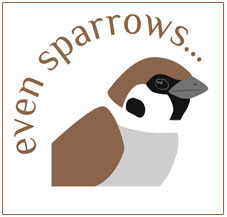

CUTHBERT AND THE EIDER DUCK
Posted: 02.03.24 in Articles category
Are you familiar with the Eider? If you have not heard the name before, you are at least likely to have heard of 'eiderdown' - the soft feathers of the eider duck which she plucks from her breast and uses to line her nest to keep her eggs warm. Eiderdown is used for lining duvets, quilts and pillows as it's considered to be one of the best insulating materials for bedding, and it can fetch high prices commercially. Most eiderdown on the market today comes from Iceland from farmers who harvest the down from eider nests at the end of a breeding season once the birds have fledged.
I know about eider as I live in Northumberland where they are a frequent sight along our coastline. And what a wonderful sight they make, especially the full adult breeding male with his bold black and white plumage, rosy flush on the breast and patches of pale green on the back of his head. There are various curious facts about eiders including their practice of 'creching’ their young, the depths to which they dive to feed on shellfish and the considerable speeds they can achieve in horizontal flight just above the sea. Eiders continue to breed on the Farne Islands, just off the Northumberland coast, as they have for centuries - as far back as the 7th century when St Cuthbert lived there on Inner Farne.
Cuthbert has been described as the most loved of all the northern saints and his memory is celebrated at his feast day on 20 March. In Northumberland we remember him especially for his affinity with birds and mammals, as recalled through various tales of Cuthbert and the animals. On our website I have previously told the stories about Cuthbert and penitent ravens; an eagle with whom he and a boy shared a fish, and the otters who dried his feet. You might be sceptical of such tales with their miraculous elements, but there is no talk of miracle when it comes to Cuthbert and the eider. It is said that he was especially fond of these sea ducks which he hand tamed and allegedly allowed one to nest in his prayer cell. Cuthbert set out rules for their protection during the nesting season and as such was the first Briton to create a bird sanctuary. Locally the Eider became known as Cuddy's Ducks and they are still found in Northumberland where we now call them 'cuddy duck'.
Inner Farne became home for a succession of hermits after Cuthbert's death who were inspired by his example to live in harmony with the resident eiders on the island. One such was St Bartholomew in the twelfth century. On one occasion a female Eider pulled the hem of Bartholomew's garment while he was praying and wouldn't desist. The saint had to stop his devotions and follow the duck down to the shoreline. In a cleft in the rock there was one of her brood - an eider chick which had evidently fallen and was trapped. Bartholomew climbed down, lifted the chick to safety and reunited it with its mother.
That special rapport between St Cuthbert and the Eider is now celebrated in sculpture on nearby Holy Island where the monk used to live before he moved offshore. In the grounds of the priory there is a more than life size bronze cast statue of the saint by Fenwick Lawson. Look at it closely and you will see an eider nestling at his feet.